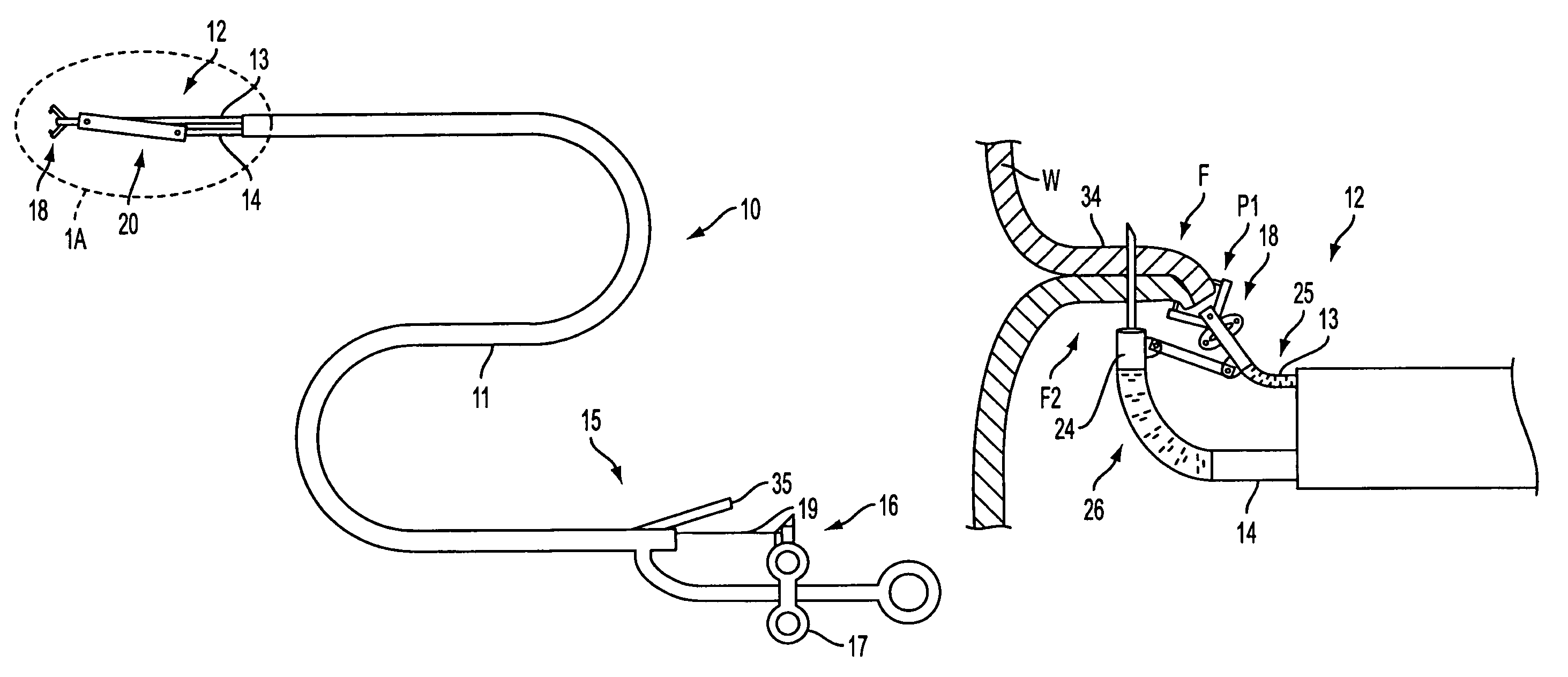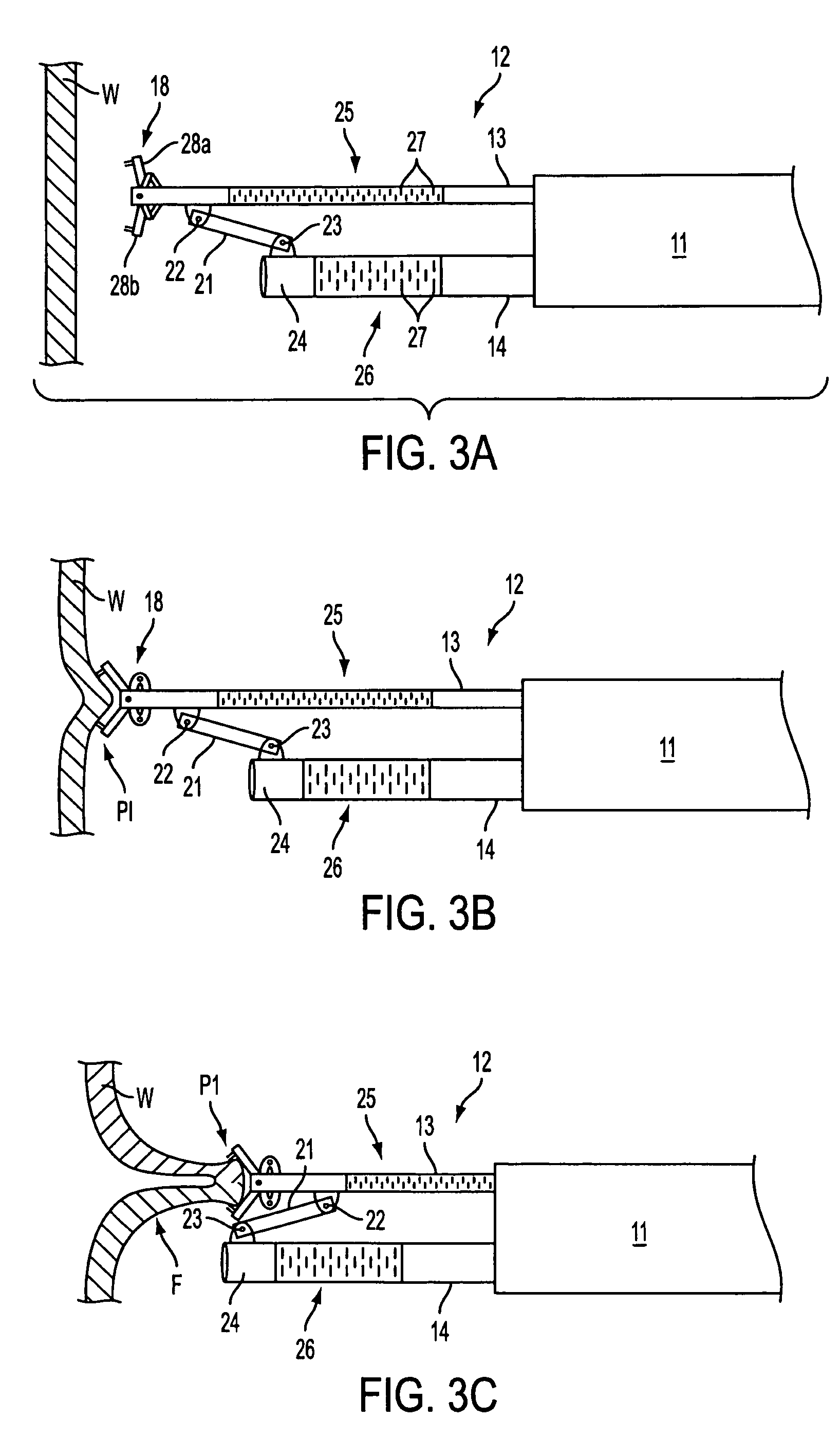Apparatus and methods for forming gastrointestinal tissue approximations
a technology of approximation and gastrointestinal tract, applied in the direction of catheters, surgical staples, surgical forceps, etc., can solve the problems of atypical diarrhea, inconvenient gastrointestinal tract resection, and inability to perform morbid procedures, so as to reduce the possibility of injuring neighboring organs and reduce the delivery profile
- Summary
- Abstract
- Description
- Claims
- Application Information
AI Technical Summary
Benefits of technology
Problems solved by technology
Method used
Image
Examples
Embodiment Construction
[0033]In accordance with the principles of the present invention, methods and apparatus are provided for treating obesity by approximating the walls of a gastrointestinal lumen to narrow the lumen, thus reducing the area for absorption in the stomach or intestines. More particularly, the present invention involves an endoscopic apparatus that engages a tissue wall of the gastrointestinal lumen, creates a tissue fold and disposes an anchor assembly through the tissue fold. Preferably, the anchor assembly is disposed through the muscularis and / or serosa layers of the gastrointestinal lumen. In operation, the distal tip of the probe engages the tissue, then moves the engaged tissue to a proximal position relative to the catheter tip, thereby providing a substantially uniform plication of predetermined size.
[0034]Formation of a tissue fold preferably is accomplished using two tissue contact points that are separated by a linear or curvilinear distance, wherein the separation distance be...
PUM
 Login to View More
Login to View More Abstract
Description
Claims
Application Information
 Login to View More
Login to View More - R&D
- Intellectual Property
- Life Sciences
- Materials
- Tech Scout
- Unparalleled Data Quality
- Higher Quality Content
- 60% Fewer Hallucinations
Browse by: Latest US Patents, China's latest patents, Technical Efficacy Thesaurus, Application Domain, Technology Topic, Popular Technical Reports.
© 2025 PatSnap. All rights reserved.Legal|Privacy policy|Modern Slavery Act Transparency Statement|Sitemap|About US| Contact US: help@patsnap.com



